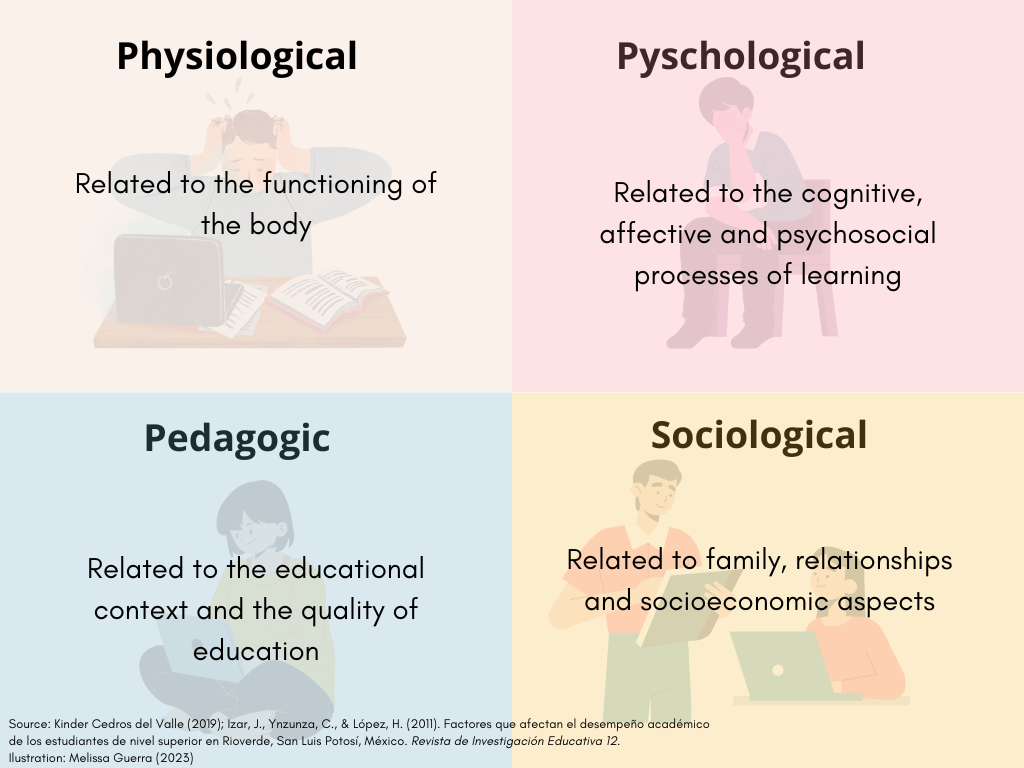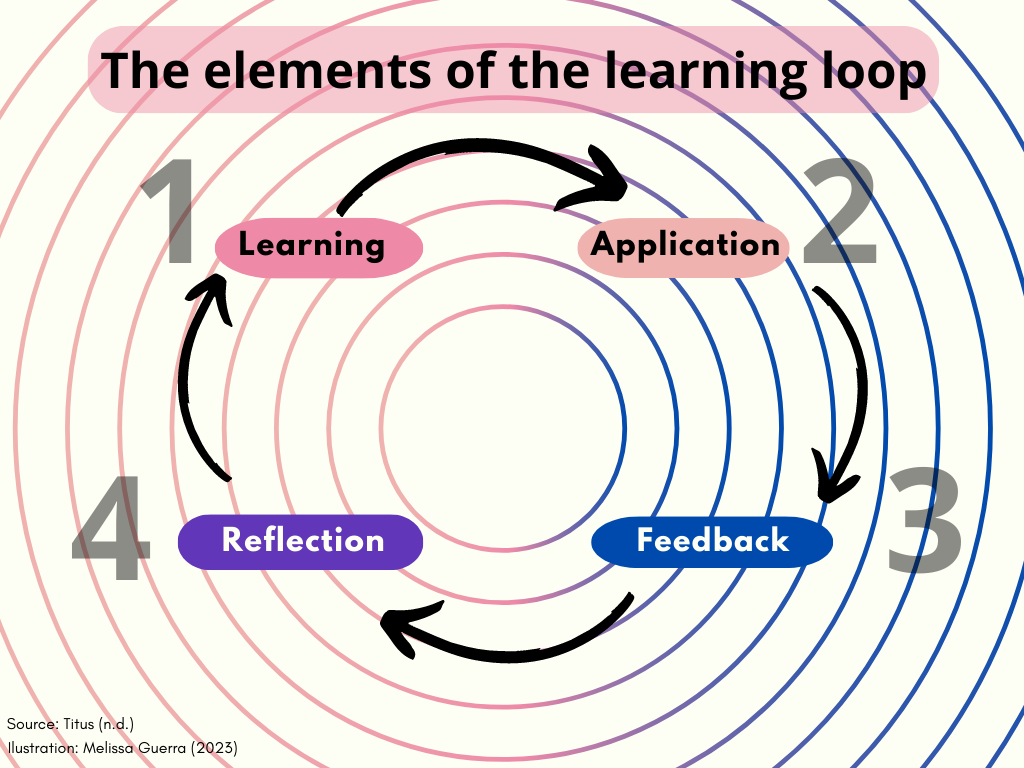Although learning has been conceived as a linear process in traditional education, the reality is that it is much more complex, so the rigid and inflexible tendency of that old-style process can no longer prevail.
Remember that the traditional pedagogical model sees the student as passive (a receiver), so the teacher has the predominant and active role in the learning-teaching process. With this type of expository teaching method, many vital elements are lost, such as creativity and educational innovation. The expectation is for the student to sit, listen, and obey orders; repetition and memorization prevail, omitting the analysis, understanding, and practical application of knowledge.
However, studies through time have proven that learning is a dynamic and complex process affected by various factors, categorized as follows:

To understand the above, we must remember that the physiological factors in education consider how the human body reacts to the educational environment and the stimuli produced by learning. These aspects include nutrition, sleep, exercise, stress, and the environment. For example, a student’s low concentration could be due to physiological factors such as lack of sleep, anxiety or stress, etc.
The pedagogical aspect, on the other hand, encompasses the quality of education, that is, all the elements that are within the teaching-learning process, such as the teaching methods themselves, the number of students per classroom, the didactic materials, the educational environment, the willingness of teachers to prepare and teach classes, among others.
Psychological factors consider cognitive, affective, and psychosocial processes that benefit or hinder learning. In addition, they take into account learning styles.
Last but not least, the sociological aspect refers to the student’s living environment, including family and social and socio-economic factors.
To understand the concept of learning as a cycle, we must understand what this entails. A learning loop is an iterative and continuous process with four principal elements.

The first two phases are easy to understand because the acquisition of learning and the application of knowledge are the basis for any learning process. However, this method differs from others by its consequent phases, which encourage continuous improvement within a learning loop cycle.
In the feedback phase, participants consciously analyze their process and question why certain things worked, i.e., they examine the whole process to understand what was done.
Finally, in the reflection stage, students analyze feedback to consider areas of opportunity to improve their learning in the next loop. The questions to consider include: What can I do to improve? What strategies can I implement? What things should be eliminated? What elements worked well that can be a basis for doing other things? At this point, students (and the guiding professor) plan the next cycle, reflecting on the progress in the previous loop.
Therefore, the aim is to assimilate and apply learning and reflect on using changes, adjustments, and improvements so that the next cycle flows in a trend characterized by continuous improvement.
This method seeks to make the next cycle better than the previous one due to the analyses of each loop’s positive or negative causes. Positive causes lead to implementing and sustaining good practices. Participants should work to lower or eliminate adverse incidents.
Notably, the learning loops can be applied in various areas, such as educational, business, and personal. The cyclical learning process promotes engagement, adaptability, continuous improvement, and metacognitive skills.
For example, to apply this method to one’s personal life, one can exemplify this:
- Learning: I learned how to make online purchases through Amazon.
- Application: I create my account, register my payment method, search and find a product that I am interested in buying, and proceed to make the payment.
- Feedback: I received my product but realized it was not what I expected. I question: Why did this happen? What did I overlook?
- Reflection: I conclude that I have to compare various products before purchasing; also, I should monitor the sales offers during the year to find the lowest prices and read the products’ reviews to validate their authenticity. I try to answer the following questions: How can I improve the quality of my online purchasing? What should I do before purchasing an item?
Now, let’s apply this method to the educational field:
- Learning: I update myself to use relevant digital tools in virtual environments.
- Application: I make lesson plans implementing what I have learned and what I regularly apply during my lessons.
- Feedback: During the first week, I saw some positive results and areas of opportunity, so I made minor adjustments. However, I proceed under the initial plans because there is no time to change them, and the teaching materials have already been completed and the tools prepared. Before the end of the semester, I asked myself the following: Was the application of digital tools adequate? Was there a fundamental change, or is it still the same? What devices can I exploit the most?
- Reflection: At the end of the course, I reflect on what happened during the first weeks, what I observed during the semester, and what I questioned in the feedback to answer the following: What can be improved to make these tools even more effective or save time in some processes? What are the adjustments accomplished? Now that I have experimented in the classroom, will I continue to use the tools the same way, or will I accommodate them to my liking?
The business field uses this methodology to improve and optimize processes. However, as explained, this method can assist countless processes that follow steps without forgetting that the focal point is continuous improvement.
This method is versatile because it can be applied micro or macro, depending on what we want to optimize and the time we have to complete the process. Therefore, the learning loop can be combined with other methodologies in the classroom to refine the teaching-learning process or in a pedagogical exercise to know how we are doing in certain areas.
The truth is that it is always good to continue experimenting with new processes and methods in the classroom, either to implement what you already have or to innovate and refresh with new ideas, expanding the panorama so that both teachers and students feel that not everything is always the same, done in the same way.
How about you? Is it a good idea to implement a learning loop?
Translation by Daniel Wetta
This article from Observatory of the Institute for the Future of Education may be shared under the terms of the license CC BY-NC-SA 4.0 
)
)


)